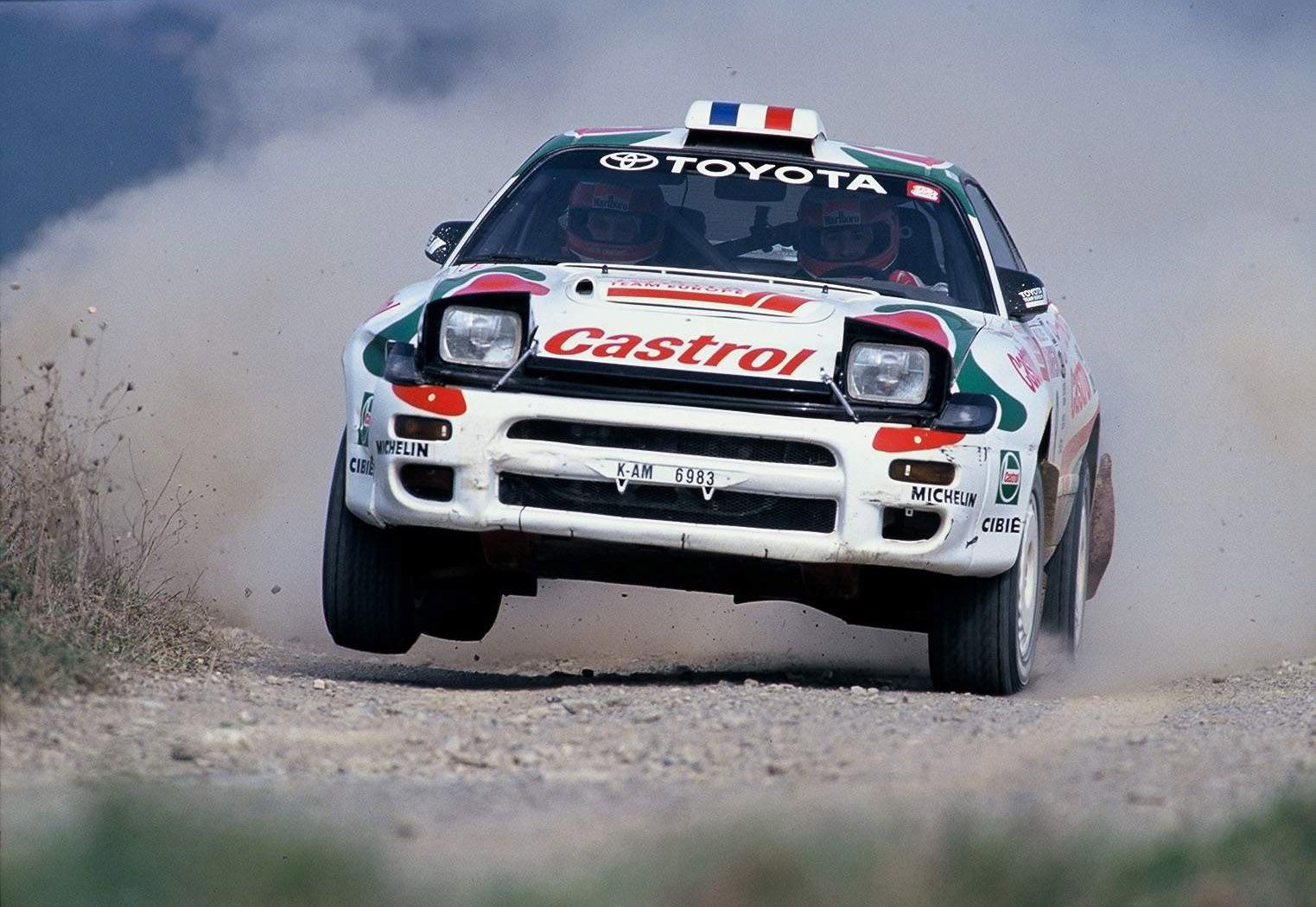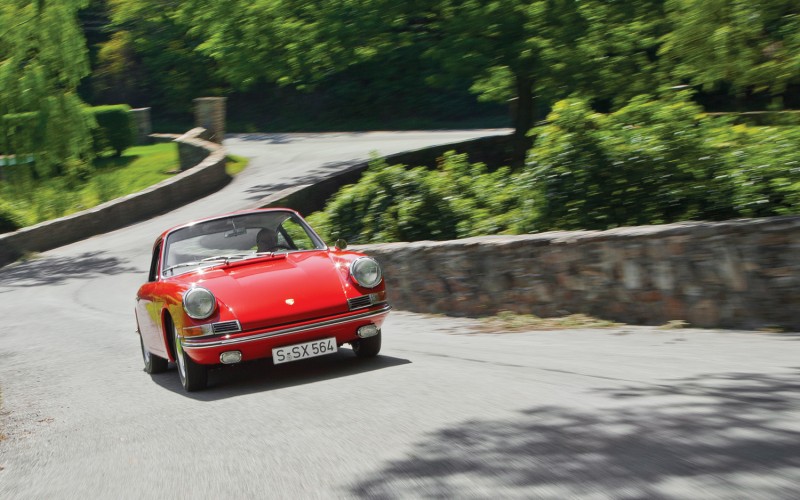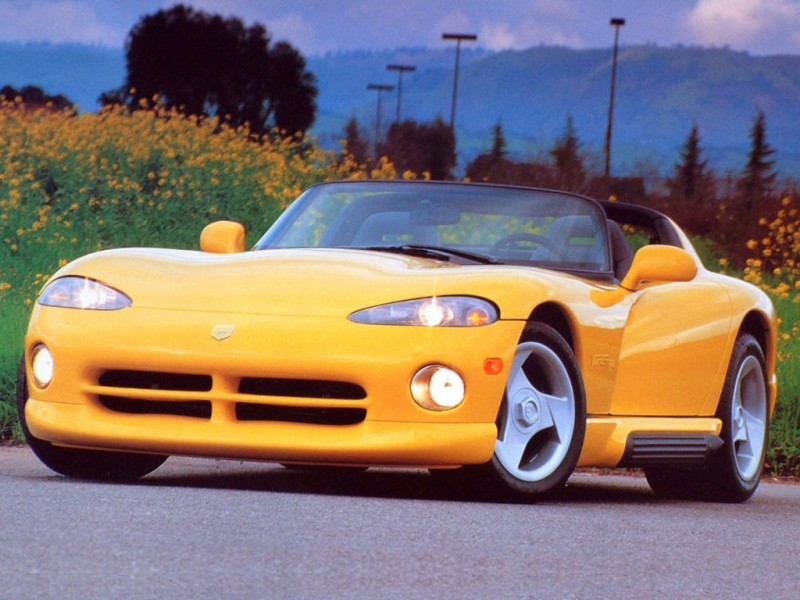Toyota took out all the stops in the late eighties and nineties to prove to the world their dominant capabilities on the track: then they elected to sell those machines directly into the publics’ hands. It was a proven marketing tactic aimed at legalizing their racing cars for competition while enhancing their brand’s international image.
Car fanatics all know the story of Ford versus Ferrari at Le Mans during the 1960s, it is a well-tenured parable among automotive evangelists. However, most do not realize that this effort was actually a small part of a much larger endeavor by Ford declared as the ‘Total Performance’ campaign. The whole operation exposed the world to the potential of Ford’s street-legal engines and cars by racing them in various competitions. The venture allowed Ford to reap incredible amounts of publicity from their successes and firmly established their viability among international competitors – even to this day. Aside from the marketing material, a crucial component of this campaign was rooted in selling street-legal homologation versions of the race cars. The availability of race car parts for purchase at dealerships engendered fierce public purchasing desire.
Move forward to the late 1980s and early 1990s. Toyota was examining opportunities to expand sales by visibly substantiating its own high-performance engineering capabilities. Following in the footsteps of Ford and other manufacturers, Toyota chose to embark on a similar ‘Total Performance’ crusade. Under this authority, factory-supported Toyota Teams actively competed in the World Sportscar Championship (WSC) and Le Mans during the nineties, occasionally finishing as high as second place.
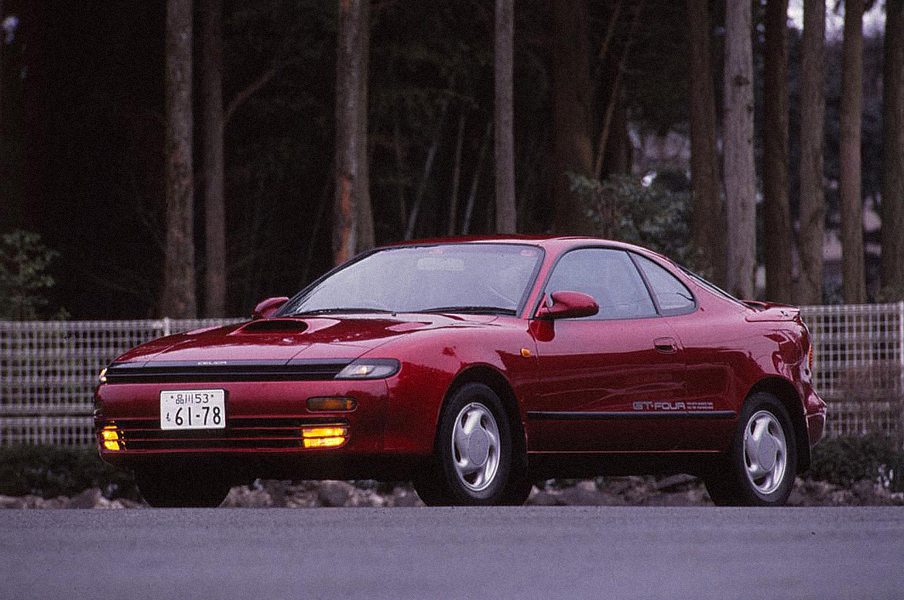
cr. Toyota
For enthusiasts, watching Toyota in the International Motor Sports Association (IMSA) series, Toyota Eagle MkIII win the highest class – GTP – championship in both 1992 and 1993 was proof of their machine’s mettle. Much like Ford, they also chose to compete in the World Rally Championship (WRC). Rivaling NASCAR in popularity among European car enthusiasts, WRC’s racers are far more akin to the daily drivers we cruise with to the shops. However, unlike their high-level WSC and IMSA series cars, their WRC participation required 5,000 street-legal homologation vehicles to be produced. While the homologation was burdensome, its requirement gave brand enthusiasts a chance to brag about owning a true ‘race car.’
Formula WRC
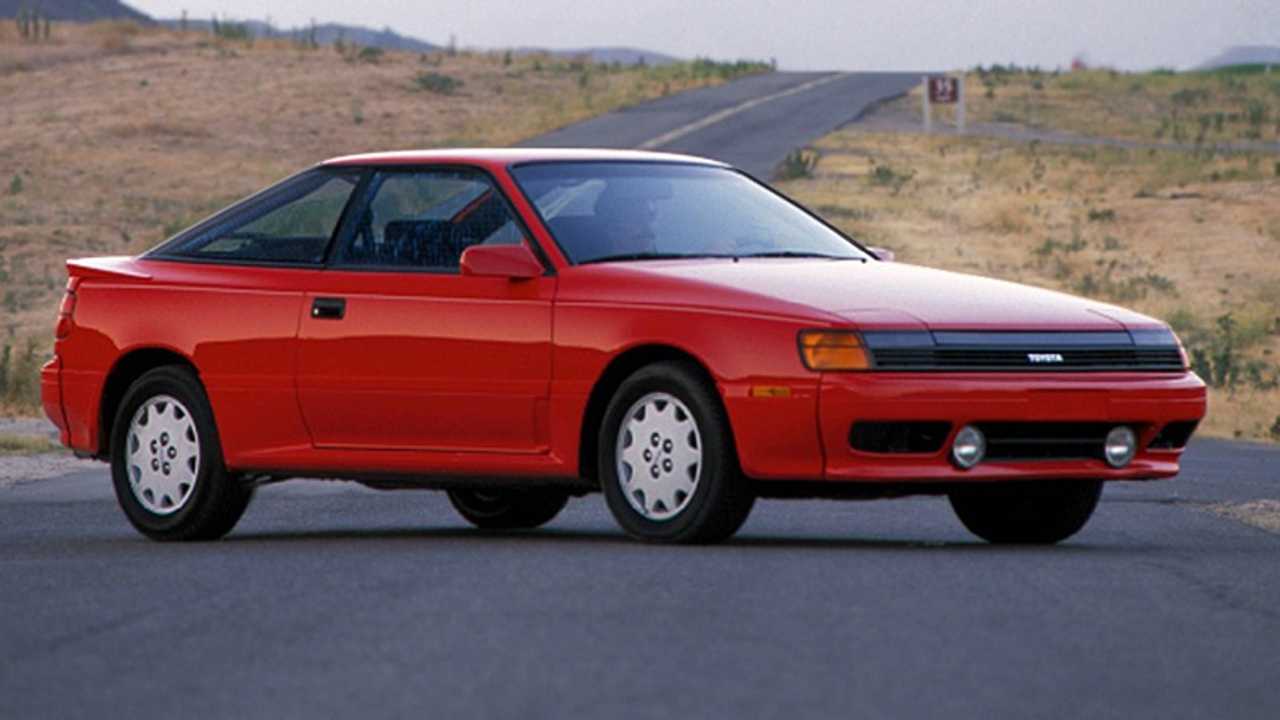
Cr. Toyota
By the late eighties, the cars conquering WRC all adhered to a similar formula: they were all-wheel drive, front-engined, and turbocharged. As such, Toyota’s Celica (T160) was chosen as the vessel to lead them through to victory. Imbued with the same race-winning-formula specifics, the new Celica (now ST165) received the GT-Four appellation around the world but was known as the All Trac in America. It was with this car, Toyota’s ST165, at the hands of Carlos Sainz, that the Japanese would bring their first Drivers Championship cup home in 1990.
With the coming of the nineties and recent victories, especially in WRC, Toyota’s fervor for motorsports blossomed as they plotted a successor to their ST165. Coinciding with the release of their newest Celica (T180) in 1989, Toyota took the milquetoast model and set its sights on legalizing it for the 1992 WRC season. By thoroughly endowing it with its predecessor’s All Trac all-wheel-drive system and essentials, the ST185 steadily improved upon the outgoing model. Numerical facts and figures from testing alone showed significant advancement of the ST185 and prominently displayed Toyota’s rally-derived erudition was working.
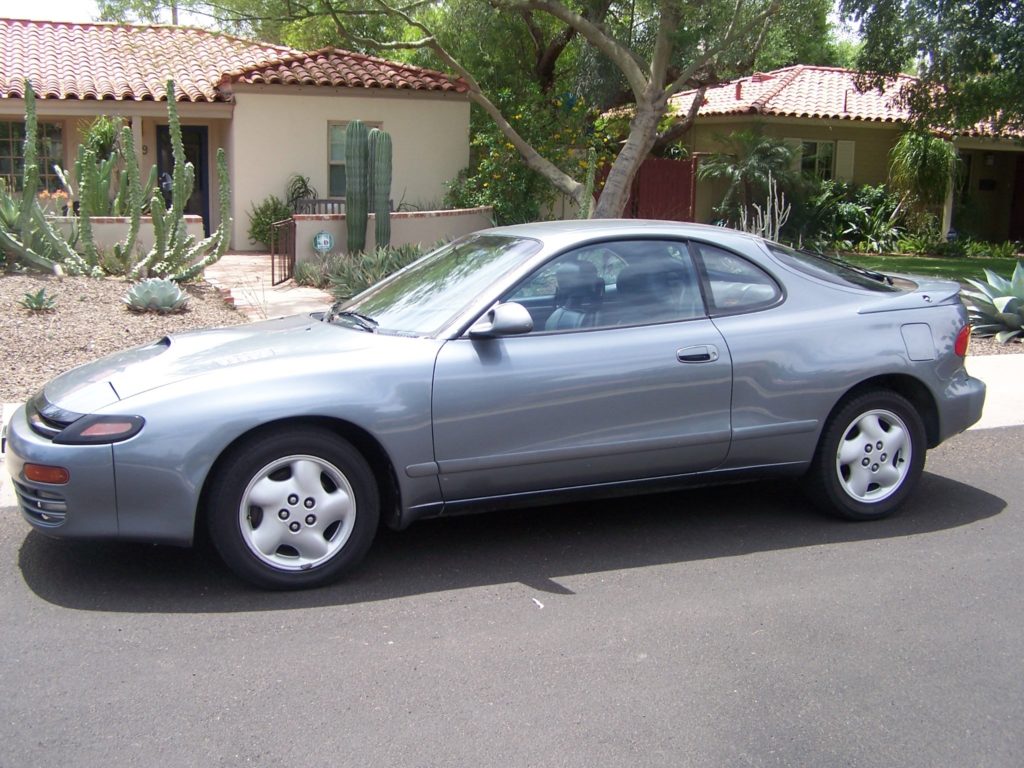
Cr. Bring a Trailer
However, as a prerequisite to WRC racing, they were still required to produce 5,000 homologation models of their prospective gold medallist. As such, Toyota, from 1989, had already begun prepping for sales of the new Celica internationally. This requirement invariably created one of the best, unsung sports car heroes of the early nineties.
Homologated Horsepower
Just to start out with, Toyota significantly focused efforts on cooling engine components. For instance, the Yamaha-derived DOHC 2.0-liter 16-valve four-cylinder turbocharged engine (codenamed 3S-GTE) now came with a top-mounted air-to-air intercooler. This cooler sat lurking below an aluminum hood featuring a cavernous scoop flanked by louvered heat extractor vents. Working in tandem, these components dramatically reduced engine bay temperatures.
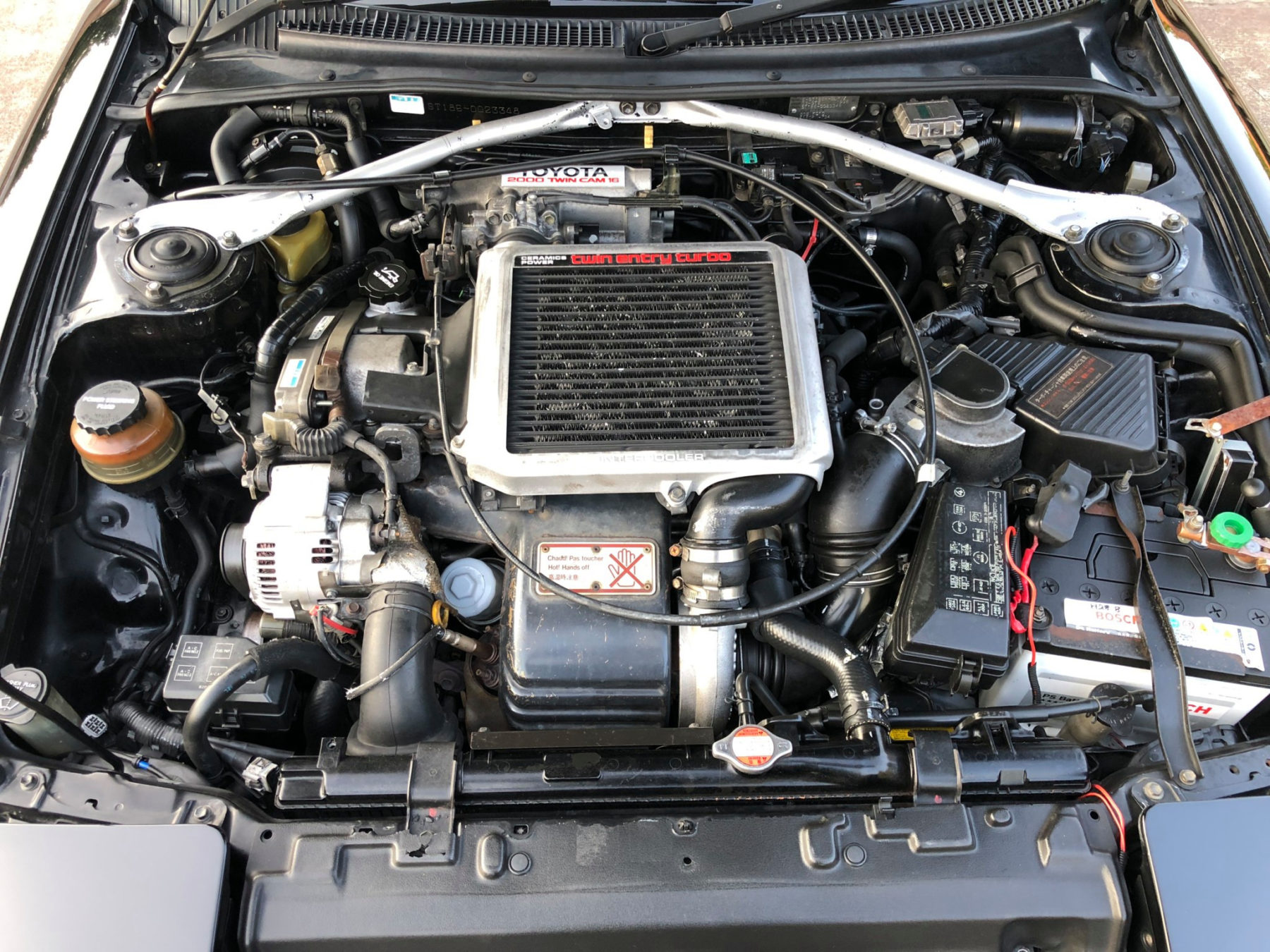
Meanwhile, the turbocharger was a faster spinning, more efficient CT26b twin-scroll unit. Uprated from previous settings, it now was cranked to eight pounds of boost and the motor’s compression was increased to 8.8:1. Around the world, these augmentations provided drivers with 200 horsepower and 200 lb-ft of torque – respectively 10 more than the previous generation. Japanese domestic models, with superior ceramic turbochargers and extra elevated compression, saw the even more prominent power figures of 225hp & 224 lb-ft. With a curb weight constellating 3,150 pounds, sixty mph was reached in approximately seven seconds, and a top speed of 140 mph could be effortlessly had.
Apart from engine upgrades, the new Celica GT-Four/All Trac’s body was now the much wider GT-S frame. Not only did this make for a seductively sinuous shape but lowered the drag coefficient and improved stability. Given the increase in size, these expansions allowed for broader and taller 16″ wheels and tires. Together, that additional size generated increased handling stability and traction. Nevertheless, the majority of that stability was due to the intelligent all-wheel-drive system working seamlessly in conjunction with the fully-independent MacPherson strut suspension.
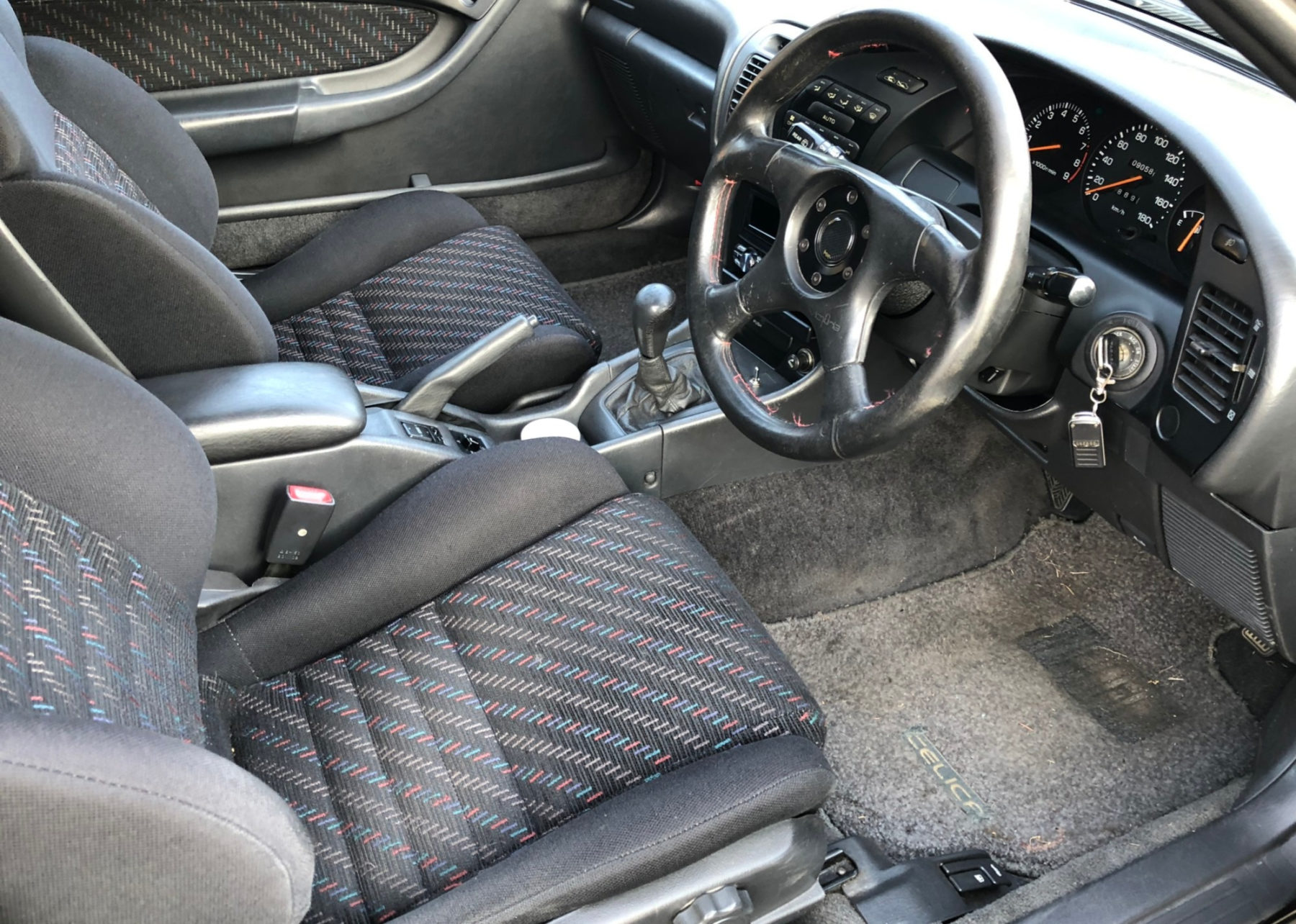
The design of the all-wheel-drive system component retained from the previous ST165 was the central differential viscous coupling arrangement responsible for continuously even power mitigation to the front and rear differentials. Power was initially metered out to these differentials from a five-speed manual transmission. All around were more significantly sized brake discs and calipers.
World Tour
With the departure of the ST165 Celica from WRC in 1991, Toyota put into marketing their ST185 model at dealerships. Although the standard version promised puissant rally performance, the homologation models were actually an even higher trim level. Designated the GT-Four RC (also known as the Carlos Sainz edition), the RC factored in a more comprehensive competition-grade equipment assortment. This decision was financially prudent for Toyota, as it allowed them to double-dip into branding sales by using the GT-Four title on both models without always using the most expensive, race-derived components.
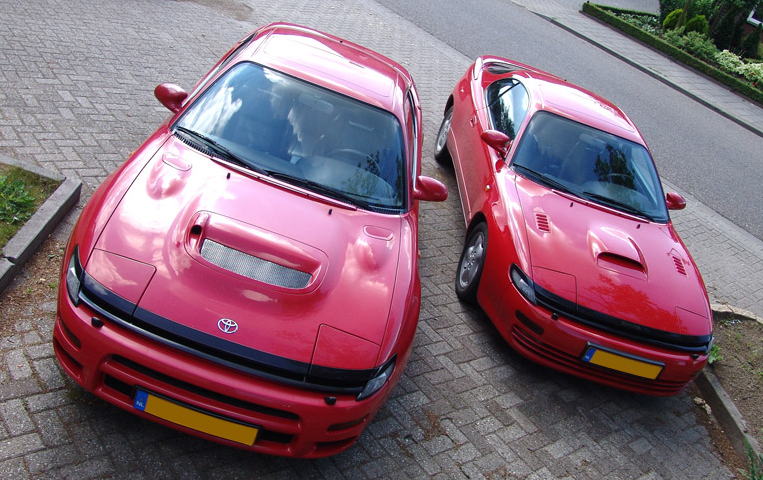
The differences between the RC and the standard GT-Four were truly impressive. A newly designed hood not only extracted air from the engine bay with greater force but also provided ducting directly into the unique water-to-air intercooler. Far more costly and cumbersome than an air-to-air unit, the liquid-filled cousin cooled quicker and provided an opportunity to duct hot air from the front radiator overtop of the front axle for increased downforce. This change, along with a revised front bumper which was lighter and aerodynamically progressive, efficaciously enriched downforce.
Building upon the demonstrated all-wheel-drive system, a Torsen differential was placed into the rear. By having a mechanical unit replace the open-rear axle, power could now be more efficiently split between wheels with traction. Upstream from the driveline, the transmission’s in WRC race cars require a shorter distance to be traveled between shifts along with stronger synchros, so this was necessarily replicated in the showroom RC models. Complying with regulations, five thousand GT-Four RC were built and then offered to the public. Sadly, not a single one of them was authorized to touch U.S. showroom floors.
Toyota On-Trac
After considerable travails during the opening events, Toyota’s ‘Total Performance’ campaign wildly prospered throughout the 1992 season. Coalescing with their WSC and IMSA season success, the four Group A Celica GT-Four strongly finished the WRC season after mid-year suspension and powertrain modifications drastically ameliorated preceding issues. The next year, with a new Castrol green and red livery, Michelin tires, and triple WRC World Champion Juha Kankkuenen behind the wheel, Toyota took first in seven of the thirteen races – handily winning the manufacturers’ and drivers’ championships. Particularly noteworthy amongst that season, Celicas finished in the top four places during the Safari Rally in Eastern Africa. The following year, Celica pilot, Didier Auriol became the first Frenchman to win the drivers’ championship, and Toyota retained its manufacturers’ championship title!
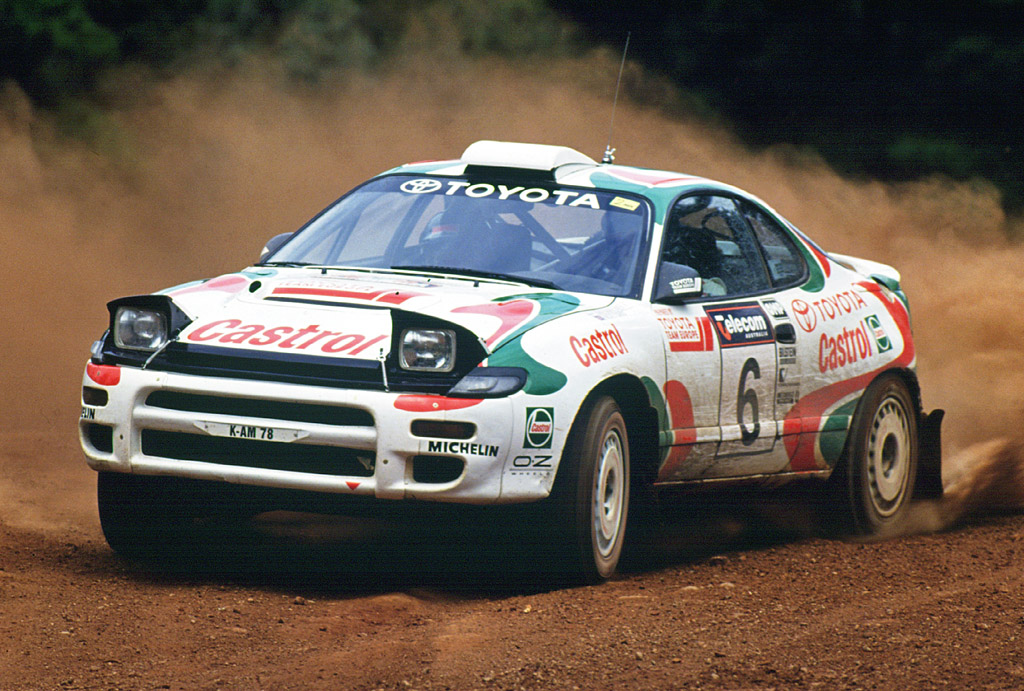
After this 1994 season, Toyota continued to field a factory effort in WRC but retired the ST185. While many automotive enthusiasts innately associate Subaru and Mitsubishi with the WRC, it was Toyota who first brought trophies back to Japan. The Celica GT-Four was quite literally winning the stages critical to Toyota’s goal of comprehensively establishing formidable motorsport credentials.
Just as Ford cemented themselves among the annals of the 1960s, Toyota’s motorsport accomplishments in the 1990s gave indisputable credence to the adroit engineering behind their road cars. Contemporarily, production GT-Four/All Trac, unfortunately, linger in the shadows of its heavyweight Supra sibling and its rivals. Nevertheless, the Celica can quietly, yet confidently remain by the wayside knowing full well that it wears elements directly originating from motorsports, and it returned with the crowns to prove it.
Specifications:
- Years – 1989-1993
- Layout – Front-Engined
- Drive – All-Wheel Drive
- Body Style – Coupe/Lift-back
- Seating – Four
- Motor – Turbocharged Inline 4
- Displacement – 2.0 Liters
- Power (hp) – 200 @ 6000rpm
- Torque (lbs-ft) – 200 lb/ft (270 Nm) @ 3200rpm
- Transmission – 5-speed Manual
- Wheelbase – 99.4in (2525 mm)
- Weight – 3350 lbs (1520kg)
- 0-60 mph (100 km/h) – 7.2 seconds
- Top Speed – 140mph (225 km/h)

